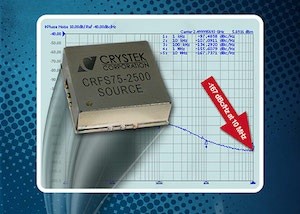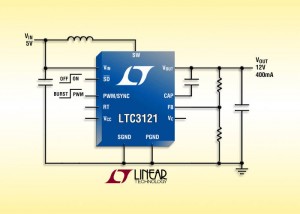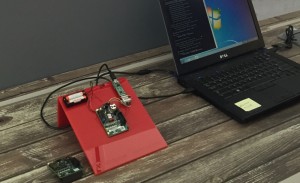
Crystek Microwave has launched a 2.5 GHZ phase locked clock source with internal reference, the CRFS75-2500
Crystek Microwave has launched a 2.5 GHZ phase locked clock source with internal reference, the CRFS75-2500 (.pdf).
The resulting source features -105dBc/Hz phase noise at 10KHz offset and a noise floor of -167dBc/Hz.
Crystek designed the module using proprietary circuitry and SAW (surface acoustic wave) resonator technology to provide ultra-low jitter/phase noise performance with true SineWave output.
| CRFS75-2500 | |||
| Frequency (MHz) |
2500.000
|
||
| Package | 0.75 x 0.75 in SMD |
||
| Supply (VDC) | 5.00 | ||
| Output | SINEWAVE | ||
| Stability ppm (°C) |
|
||
| Data Sheet | CRFS75-2500.pdf | ||
| Notes |
|



